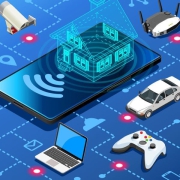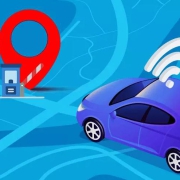Benefits of Children’s GPS Tracker
In recent years, GPS trackers have become increasingly popular as a means of monitoring and protecting children. With increasing attention to child safety issues, parents are turning to technologies such as GPS trackers to help protect their children’s safety. Children’s GPS trackers have many benefits, and this article will explore some of the most important advantages.
Firstly, GPS trackers can provide parents with peace of mind. When children leave home or are at school, parents often worry about their safety. GPS trackers can help alleviate this concern as they allow parents to keep track of their children’s movements at all times. Parents can monitor their children’s movements through smartphones and receive alerts if their children leave a predetermined area. This can reassure parents that their children are safe and where they should be.
Secondly, GPS trackers can help quickly locate missing children. Unfortunately, in some cases, children may get lost or lost. In this case, GPS trackers can provide valuable assistance in finding children. Parents can use GPS trackers to find the exact location of their children, which can help speed up the search process. If necessary, parents can also provide GPS tracker data to the authorities to assist in searching.
Thirdly, GPS trackers can improve communication between parents and children. GPS trackers typically have additional features such as two-way communication, which allows parents to communicate with their children at any time. This can be very helpful in situations where children may need help or in emergency situations. In addition, the bidirectional communication function can provide children with a sense of security because they know they can easily contact their parents when needed.
Fourthly, GPS trackers can help parents set boundaries for their children. Many GPS trackers have geofencing features that allow parents to set specific areas where their children cannot leave. This can include restrictions on how far children are from home or restricted areas that children should not enter. If the child leaves the designated area, the GPS tracker will remind parents, which can help enforce boundaries and ensure the child’s safety.
Fifth, GPS trackers can help parents monitor their children’s activities. Some GPS trackers come with additional features such as step tracking, which can help parents monitor their children’s physical activity levels. This is very helpful for promoting healthy habits and encouraging sports activities. In addition, some GPS trackers can monitor children’s phone usage, allowing parents to limit screen time and ensure that their children do not engage in inappropriate activities.
Sixth, GPS trackers are very useful for parents of children with special needs. Children with special needs often require close supervision to ensure their safety. GPS trackers can help provide additional safety for these children, allowing parents to monitor their movements and ensure they remain safe. The two-way communication function can also be helpful in situations where children may need help or in emergency situations.
Seventh, GPS trackers can help children stay safe during travel. Family vacations or travel can be a form of pressure for parents, especially when traveling with their children. GPS trackers can help alleviate this pressure, as parents can monitor their children’s movements during travel. This can reassure people that children are safe and in their rightful place, which can help make everyone’s journey more enjoyable.
In short, children’s GPS trackers have many benefits for parents and can provide valuable help to ensure the safety of children. Some important advantages of GPS trackers include reassuring parents, finding missing children, improving communication, setting boundaries, monitoring activity levels, helping parents of children with special needs, and protecting their safety during travel. Although GPS trackers should not replace appropriate supervision or communication between parents and children, they can become an additional tool to help protect children’s safety in today’s constantly changing world.







